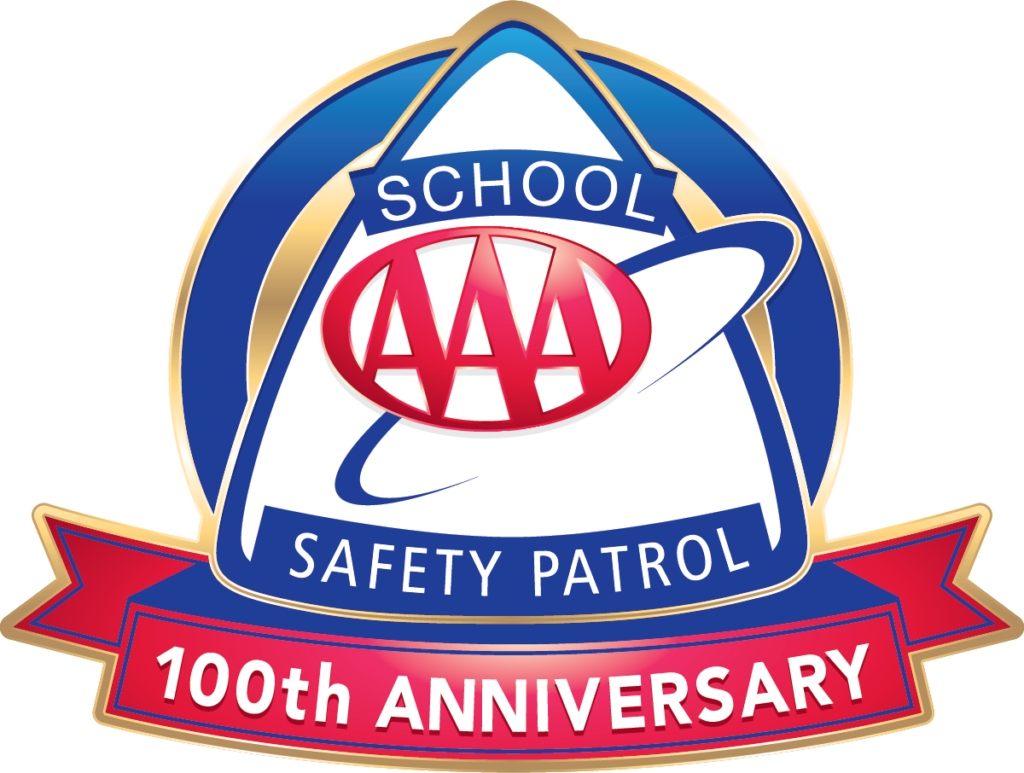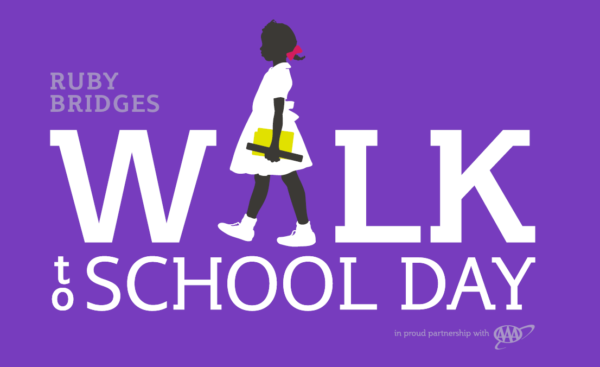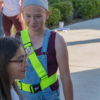More Than 100 Years of Student Safety
 AAA is proud to celebrate its School Safety Patrol program’s centennial anniversary. For more than 100 years, Patrollers around the world have provided school-aged children an extra sense of safety and security when going to and from school. The program and its more than 440 Lifesaving Award recipients have contributed to the steady decline of student pedestrian (ages 5–14) U.S. deaths—a 24% decrease since 2010.
AAA is proud to celebrate its School Safety Patrol program’s centennial anniversary. For more than 100 years, Patrollers around the world have provided school-aged children an extra sense of safety and security when going to and from school. The program and its more than 440 Lifesaving Award recipients have contributed to the steady decline of student pedestrian (ages 5–14) U.S. deaths—a 24% decrease since 2010.
Millions of boys and girls have honorably served their classmates since the AAA School Safety Patrol program began in the U.S. in 1920. Interest in the program has spread around the world; at least 30 other countries, including New Zealand, the Netherlands, England, Germany, and France, have emulated the AAA School Safety Patrol program. The experience is the same — a reduction in traffic death rates.
AAA clubs have proudly sponsored, promoted and aided AAA School Safety Patrol programs as a community service in the interest of safety for all schoolchildren. During its long and distinguished history, the AAA School Safety Patrol program has provided a safer pedestrian environment and a wide spectrum of educational opportunities for millions of children, and AAA has provided the means for the patrol to succeed.
Download the AAA School Safety Patrol Operations Manual
- Complete training in traffic safety.
- Protect students from hazards of crossing roads and highways on their way to and from school.
- Assist bus drivers in safely transporting students to and from school.
- Teach fellow students about traffic safety.
- Serve in other leadership roles under the direction of school officials.
Partnerships
A AAA School Safety Patrol program requires people and organizations to work together. AAA encourages your school to work with:
- Parent-teacher groups
- Police
- Police auxiliaries
- Bus drivers
- Traffic engineering departments
- Community safety councils
- Service clubs
- Other community organizations
The Role of AAA
AAA/CAA provides:
- Sponsorship
- Traffic safety education, logistical support and awareness presentations
- Public outreach and recognition
- Resources, including equipment and program guidelines
The Role of the School
Principals appoint teachers to serve as Patrol Advisors. Advisors implement AAA School Safety Patrols within the school and meet with other area Advisors to exchange best practices.
The Role of the Parent-Teacher Group (Where Applicable)
The PTA or PTO:
- Supports the school’s Patrol program
- Sponsors equipment and training
- Implements recognition programs
- Serves as the liaison between the school and community
The Role of Law Enforcement or Traffic Engineering Officials
Law enforcement or traffic engineering officials:
- Serve as a program consultant
- Advocate on the Patrol’s behalf to motorists and the community
- Contribute to the Patrol’s training and development
The Role of the Community
Civic organizations — such as police auxiliaries, women’s clubs, school booster organizations, American Legion posts or other safety or civic groups — may provide recognition and community awareness programs.
Securing Official School Authorization
Before school principals institute the AAA School Safety Patrol program, they must obtain approval from the school superintendent or school board. The approval process will vary according to community and school system requirements. In some cases, principals may seek support for the program from community organizations. Although most superintendents are familiar with Patrol programs in general, they may not understand the details of operation.
To gain support in the community and in the school system, a principal introducing a School Safety Patrol program should be prepared to:
- Identify the community’s unique needs
- Present the program’s objectives
- Explain operational requirements
- Outline available resources to support the program
The school principal may choose to use the AAA School Safety Patrol School Registration Form. An outline of the school’s specific roles and responsibilities can be found above.
Parental Permission
Students must have permission from parents or legal guardians to participate in the AAA School Safety Patrol program. When they understand the educational value, community service and character-building aspects of the program, most parents and guardians are proud to give their permission.
Download the AAA School Safety Patrol Catalog
The two identifying pieces of equipment for safety patrol members are:
- Official patrol belts.
- Badges pinned to the shoulder strap of the belt at chest level.
Schools also may provide additional equipment, such as ponchos, caps and flags.
Tip: Many schools are using walkie-talkies for patrollers to communicate with each other and the advisor while on duty.
Assigned equipment should be documented. Officers must maintain a roster with each patrol member’s name and a notation of equipment provided to them.
Responsibility
Each patrol member must wear a belt and badge when on duty. Assign a sergeant to see that patrol members are accountable for the care of equipment assigned to them. It is the sergeant’s responsibility to keep a daily record of the condition of this school property.
Equipment includes:
- Belts.
- Badges.
- Flags.
- Caps.
- Ponchos.
The sergeant responsible for equipment works with the captain and patrol sponsor to order replacement equipment. Equipment which is lost or misplaced must be replaced. Worn-out equipment should be destroyed.
Encourage students to refer to the Patrol Member Handbook for proper wear and care of patrol equipment.
Care Tips
Poncho Care
The following suggestions will help maximize poncho wear:
- Hang the poncho on a wooden hanger, with shoulders centered on the hanger arms.
- Hang it in a place that is cool and away from direct sunlight and heat.
- Make certain the sleeves are straight. Turned-back cuffs hold water and may cause cracking or mildew.
- If dirty, wipe clean only with a damp cloth.
Belt Care
Belts should be taken off during off-duty hours, rolled up and kept in a designated place. They should be cleaned regularly with a damp cloth and will be bright and smart-looking if taken care of. If the patrol belt needs cleaning:
- Pour some liquid or powder soap onto a damp cloth and scrub thoroughly.
- Rinse the belt thoroughly.
- Artificial heat such as dryers or ovens should not be used for rapid drying.
- Alcohol and abrasive cleaners should not be used.
Badge Care
Badges should be worn only on the patrol belt. They should be pinned on the shoulder strap of the belt at chest level and should be removed only when the belt is being washed. Removing and replacing the badge several times each day can cause the pin to break. Badges may be cleaned by washing with mild soap and water. It is important to immediately dry the badge. Polish containing abrasives should not be used to clean badges.
AAA School Safety Patrollers Spark a Movement
A class of AAA School Safety Patrollers from California learned about the civil rights icon Ruby Bridges, and her brave walk to school as she became one of the first Black children to integrate an all-white school in New Orleans. With a simple question from one student – “Why isn’t there a day for Ruby?” – an idea was sparked.
These young leaders founded Ruby Bridges Walk to School Day, with the vision of building a nationwide movement and starting a day of dialogue. Since 2018, student leaders have organized an annual walk to school day every November. In 2021, AAA and the Ruby Bridges Foundation partnered to support the Walk to School Day with over 90,000 students across 36 states participating. This year, AAA invites all clubs to join these students in this annual tradition to promote safe and inclusive schools and communities for all.
Watch this short video of Melody Lai, a 2022 National Patroller of the Year Award Winner, discussing what Ruby Bridges Walk to School Day means to her and her school.
Ruby Bridges: Civil Rights Icon & Activist
On November 14, 1960, six-year-old first-grader Ruby Bridges stepped into the history books when she integrated William Frantz Elementary School. She was not looking to make history. She just wanted to go to school and have the opportunity to learn, and to do so safely. But her courageous action and historic steps initiated the desegregation of New Orleans’ public schools.
Now, 61 more than 60 years later, Ruby is looking to make sure school-age kids around our nation have that same experience. Her vision is for them to become the next generation of leaders who end racism and all forms of bullying together, one step at a time.






